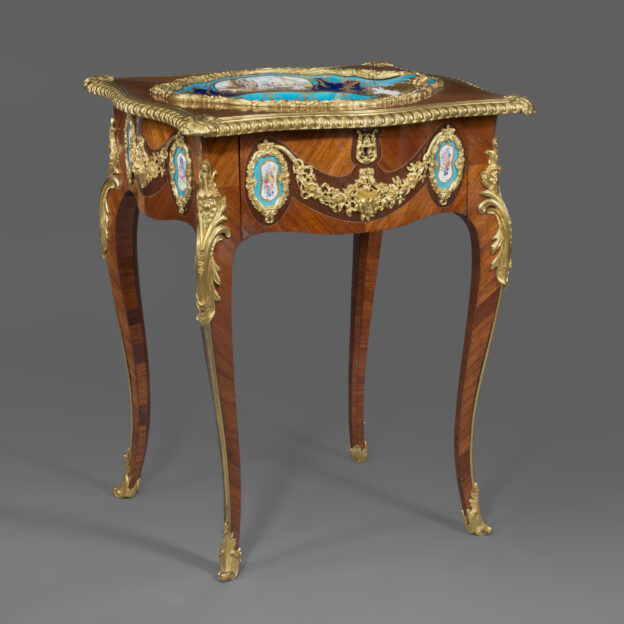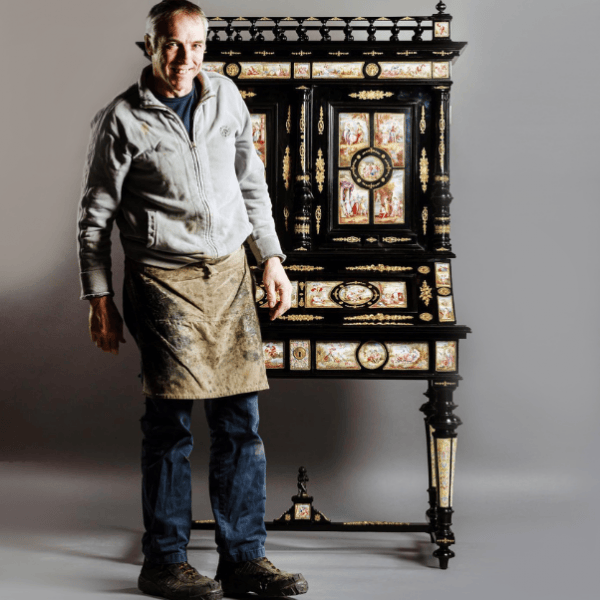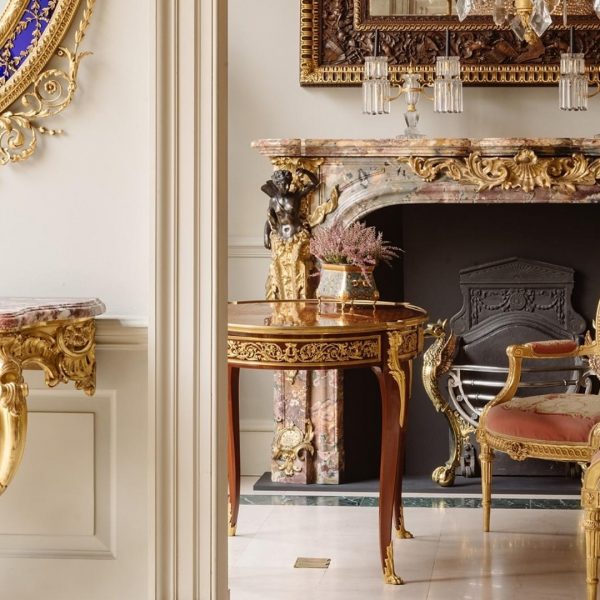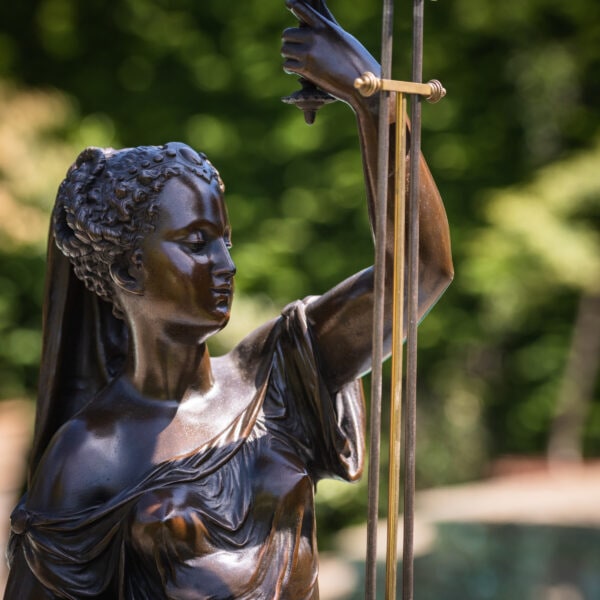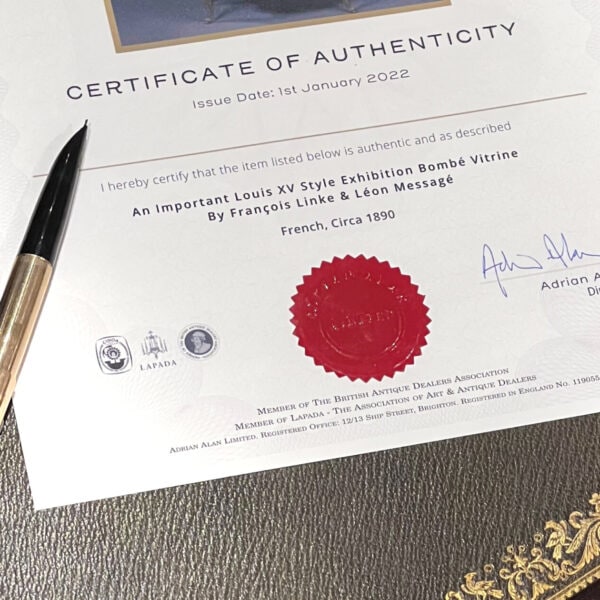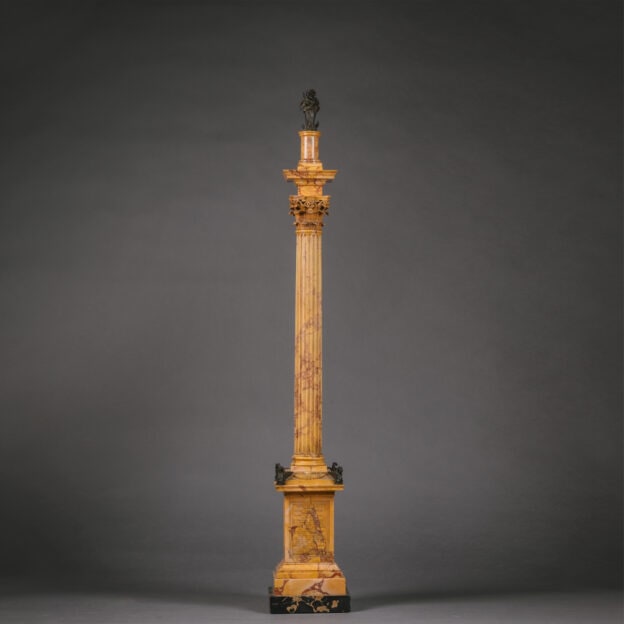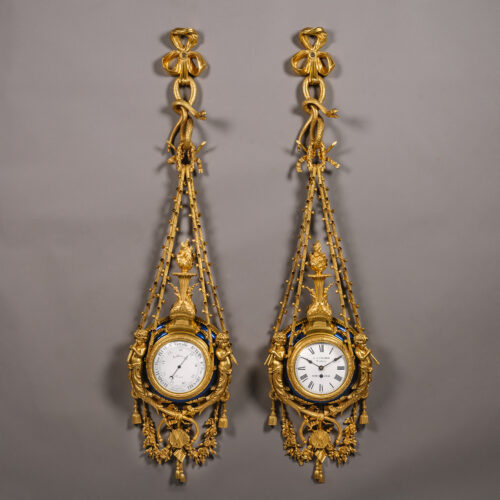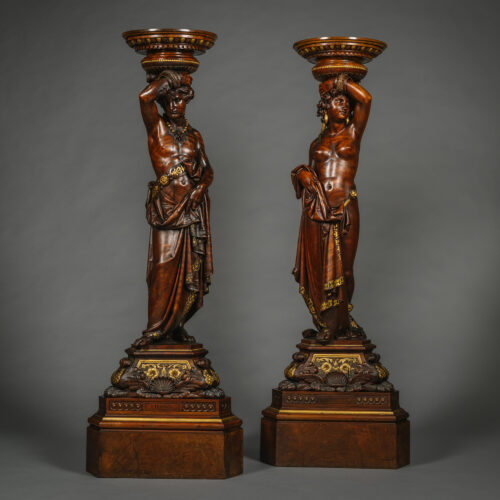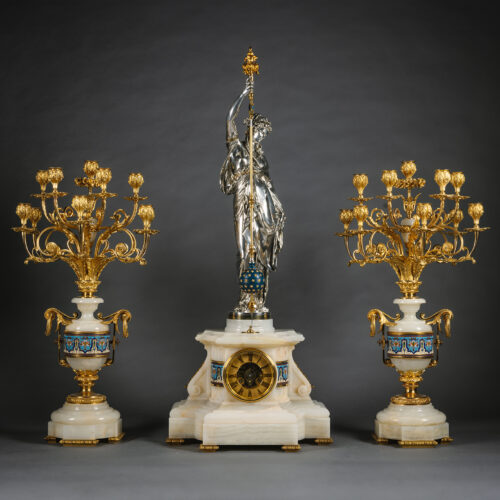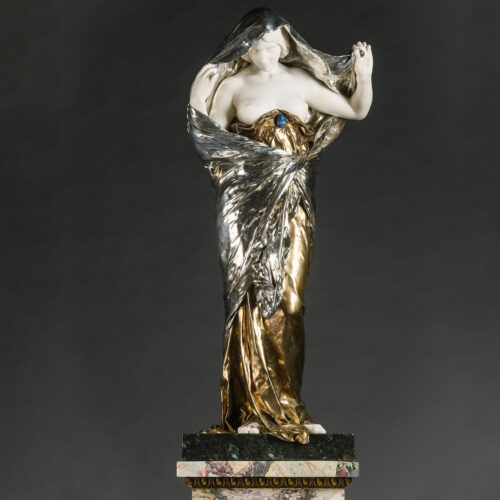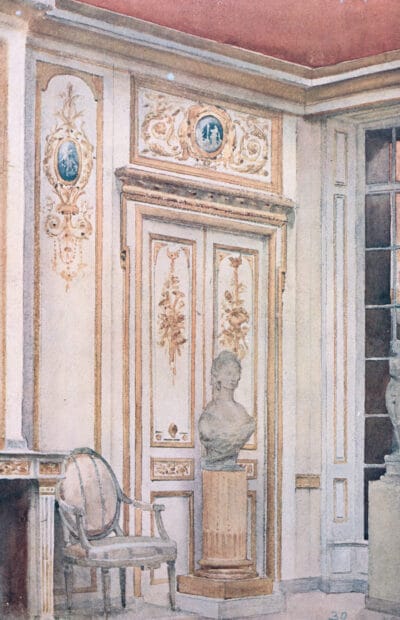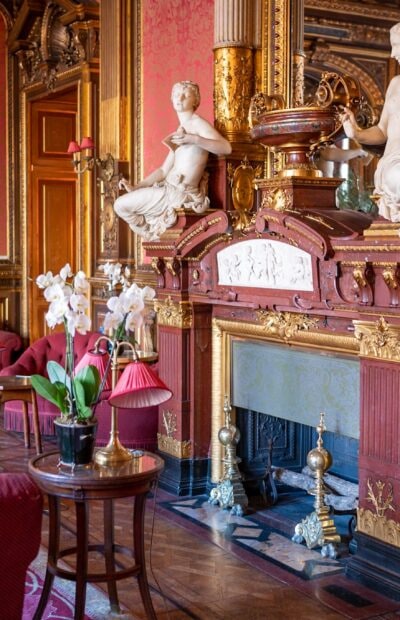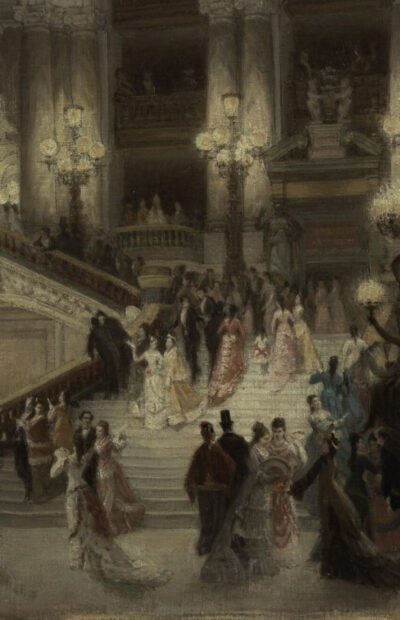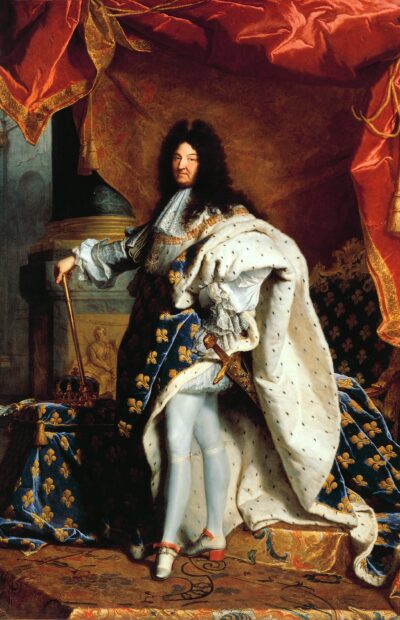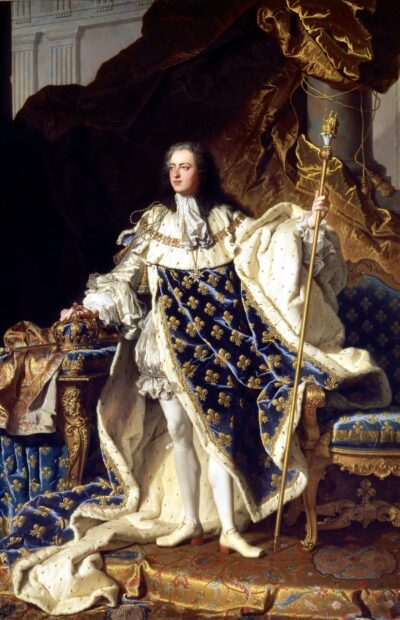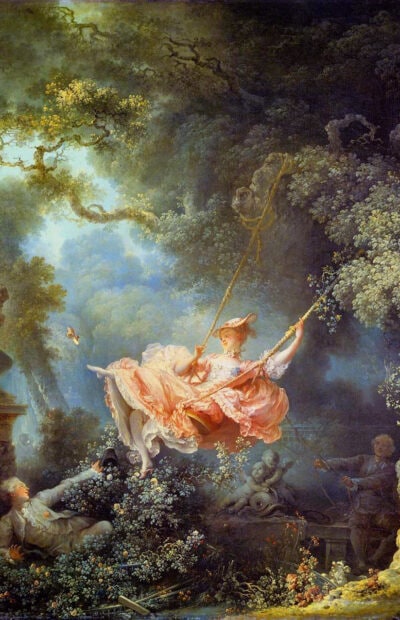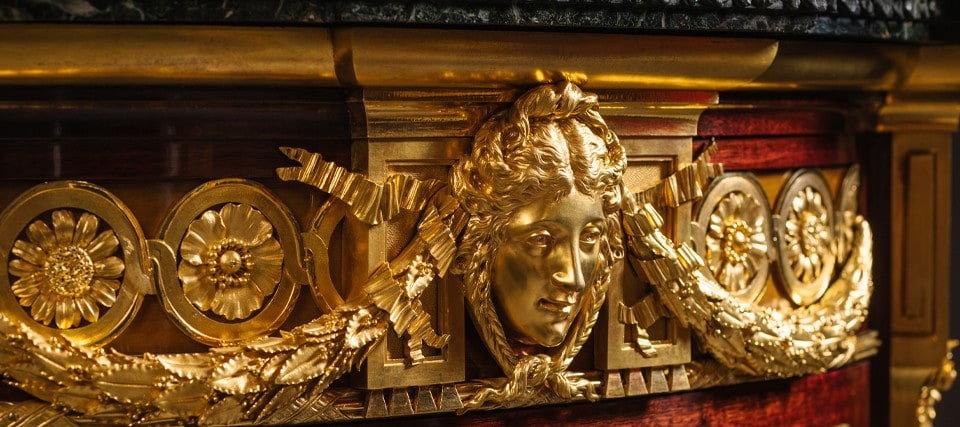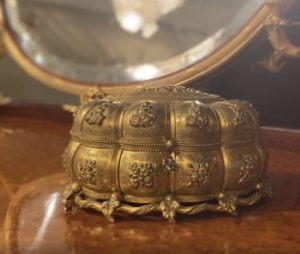Shop
-
£38,000
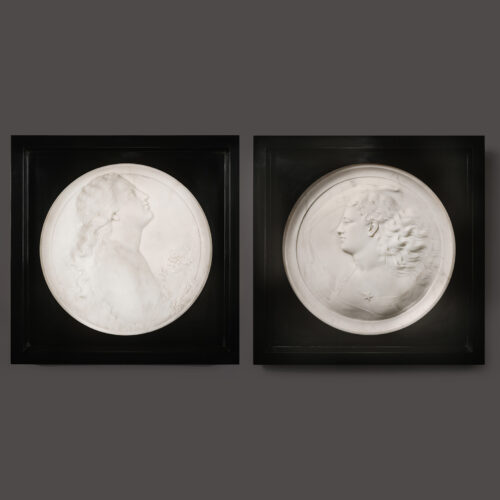
Madison Colby
A Pair Of White Marble Portrait Roundels Of ‘Morning’ and ‘Evening’
-
POA
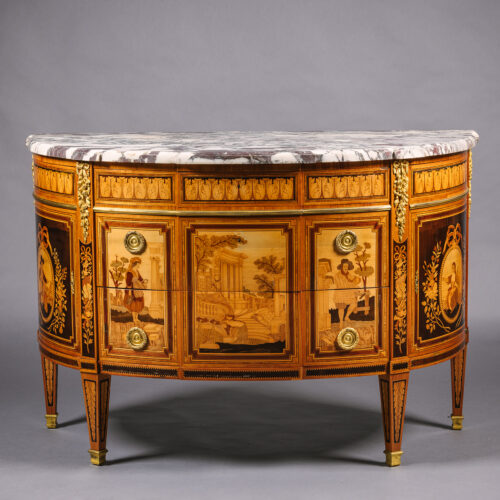
Paul Sormani
An Important Louis XVI Style Marquetry Inlaid Marble-Top Commode
-
£28,000
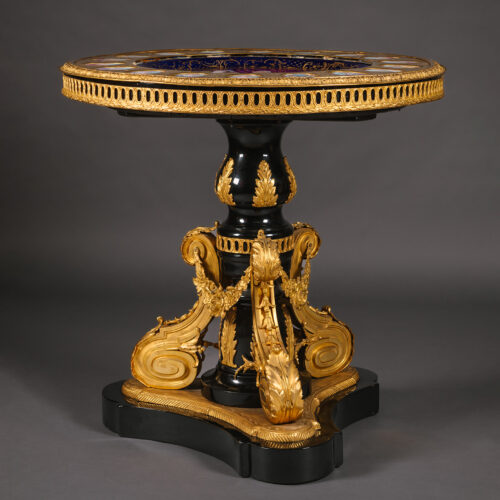
Sèvres (Style)
A Napoleon III Gilt-Bronze and Sèvres-Style Porcelain Mounted Ebonised Centre Table
-
£28,000
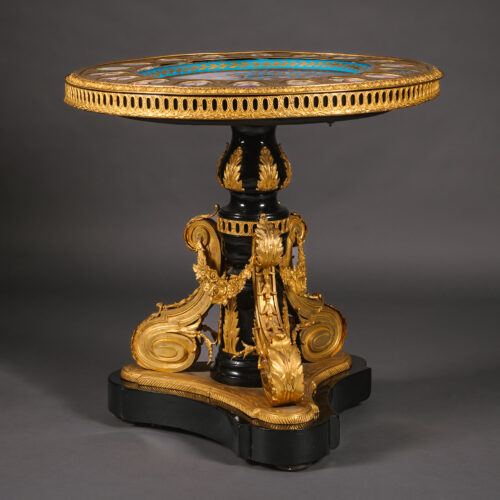
Sèvres (Style)
A Napoleon III Gilt-Bronze and Sèvres-Style Porcelain Mounted Ebonised Centre Table
-
£15,000
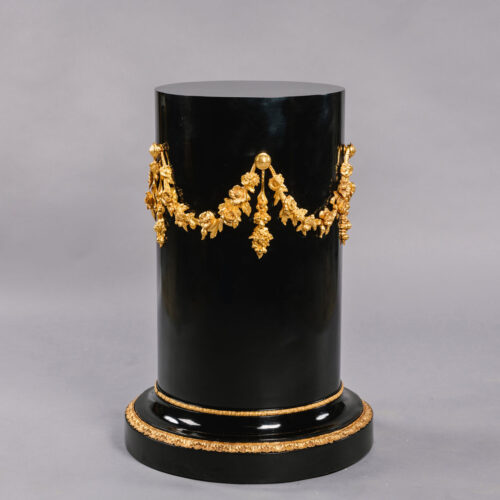
A Napoleon III Gilt-Bronze Mounted Ebonised Pedestal
-
£33,000
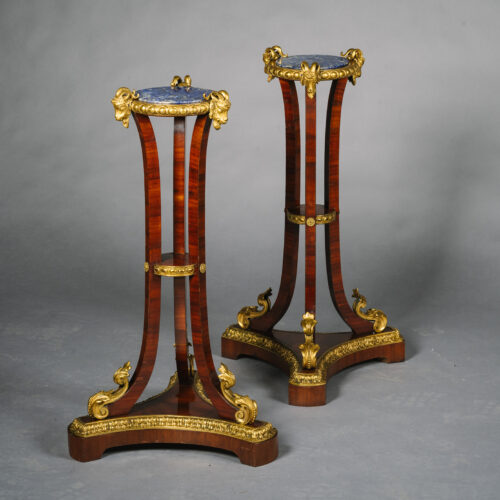
A Pair of Fine and Unusual Louis Philippe Period Gilt-Bronze, Mahogany and Lapis Lazuli Guéridons or Jardinière Stands
-
£185,000
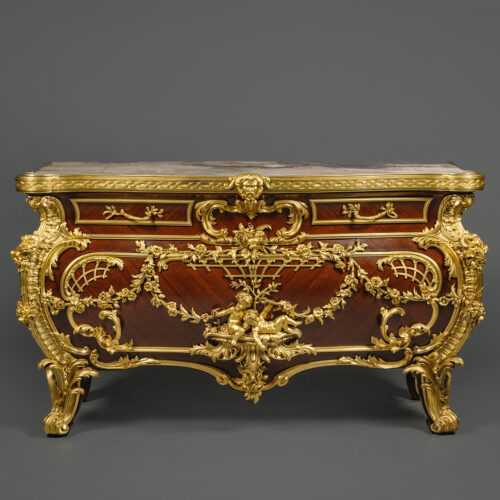
François Rosel
A Magnificent Rococo Style Gilt-Bronze, Bois Satiné and Mahogany Commode After The Celebrated Model By Johann Melchoir Kambli
-
£22,000
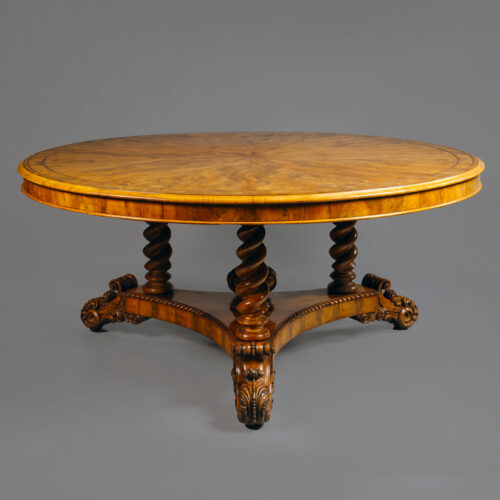
A Large William IV Yew Wood Centre Table
-
£16,000
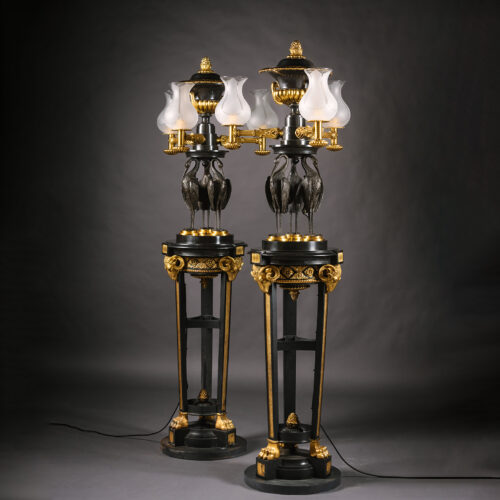
After James Smethurst of New Bond Street
A Pair of Regency Style Gilt and Patinated Bronze Floor Lamps or ‘Torchères’
-
£38,000
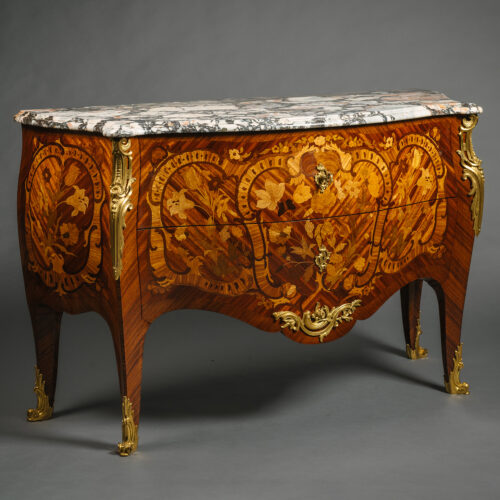
Paul Sormani
A Fine Louis XV Style Gilt-Bronze Mounted Marquetry Commode
-
£165,000
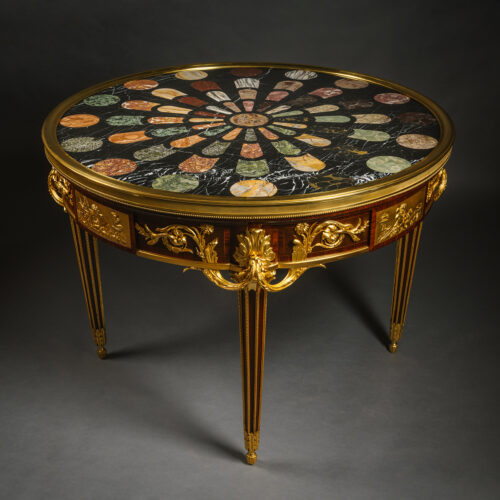
François Linke
A Rare and Important Gilt-Bronze Mounted Mahogany Centre Table with ‘Pietre Dure’ Specimen Marble Top
-
£24,000
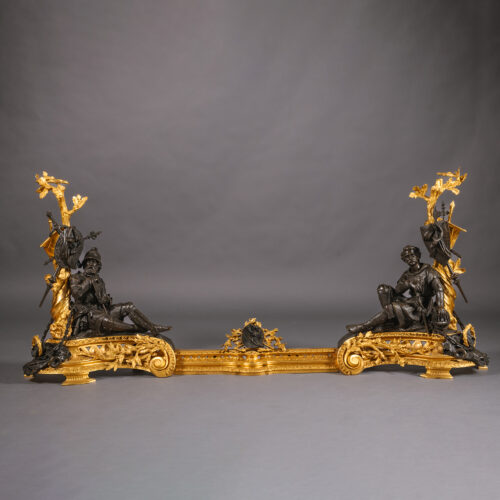
Charpentier & Cie Bronziers
A Fine Napoleon III Period Gilt and Patinated Bronze Figural Chenet and Fender
-
POA
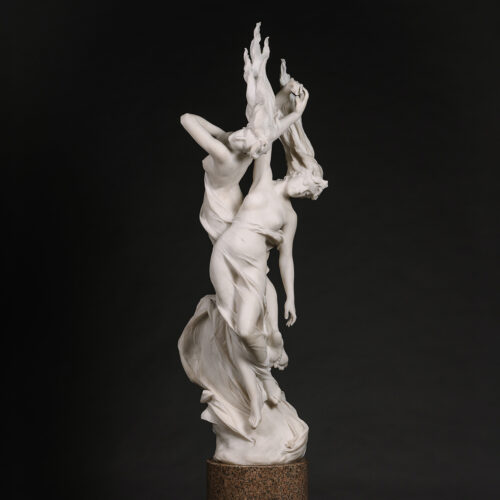
Vittorio Caradossi
An Exceptional White Statuary Marble Figural Group Entitled ‘Stelle Cadenti’ (‘Falling Stars’)
-
£14,000
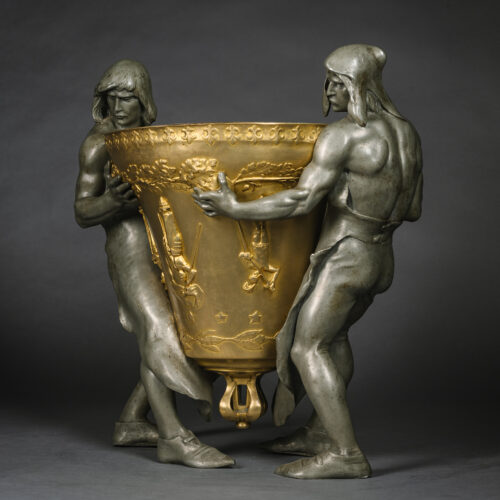
Louis Albert-Lefeuvre
A Gilt and Pewter Patinated Bronze Sculptural Jardiniere, Entitled ‘The Bell Founders Of The Middle Ages’, Cast By The Siot Decauville Foundry
-
POA
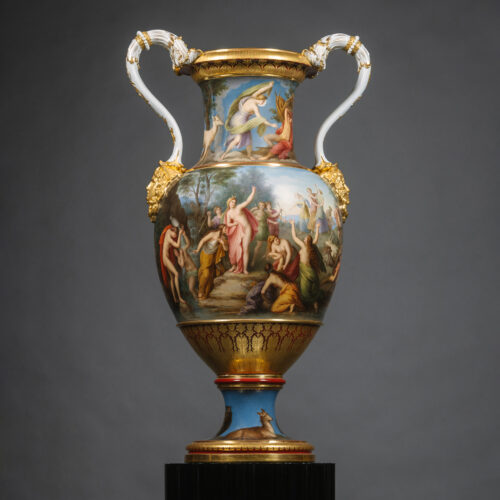
Meissen
The ‘Diana and Actaeon’ Vase – A Large Meissen Porcelain Two Handled Vase, Painted By Julius Schnorr von Carolsfeld (1794-1872)
-
£28,000
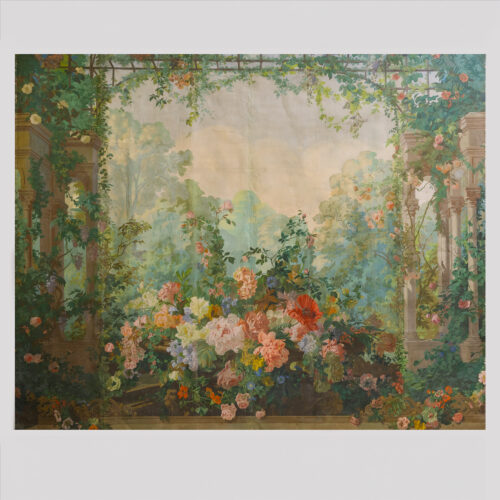
Manufacture Jules Desfossé
‘Le Jardin d’Armide’ (‘The Garden of Armida’) A Rare Wallpaper Panel Designed By Édouard Muller
-
£38,000
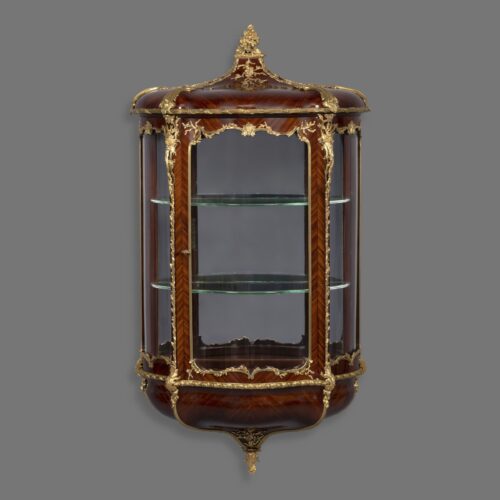
Emmanuel Zwiener
An Unusual Louis XVI Style Gilt-Bronze Mounted Wall Vitrine
-
£10,000
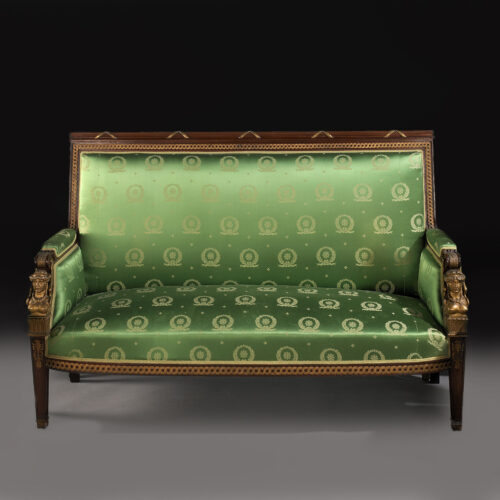
After François-Honoré-Georges Jacob-Desmalter
A Fine Mahogany And Gilt-Bronze Second Empire Canapé
-
£10,000
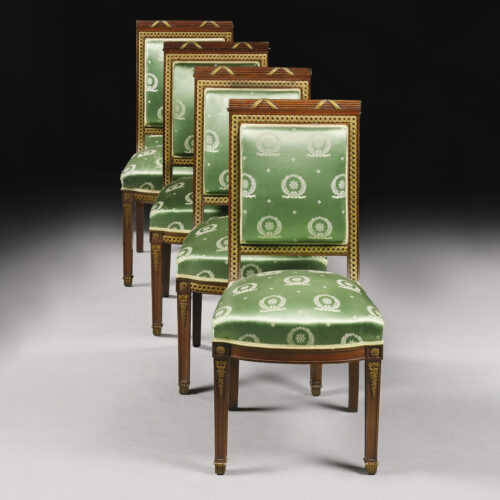
After François-Honoré-Georges Jacob-Desmalter
A Set of Four Mahogany And Gilt-Bronze Second Empire Style Salon Chairs
-
£48,000
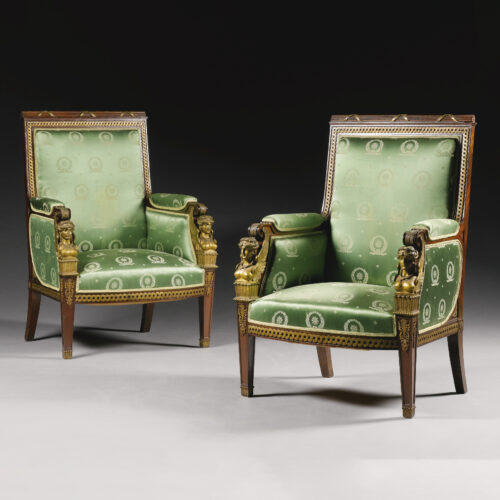
After François-Honoré-Georges Jacob-Desmalter
A Fine Pair of Empire Style Mahogany And Gilt-Bronze Bergères
